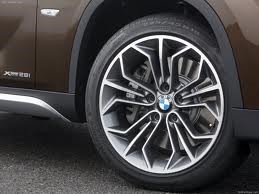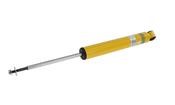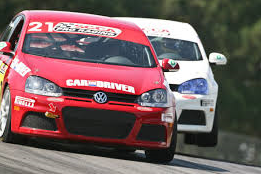- 03/31/2014
- 2 Min Read
- By: Alan Power
Reducing Unsprung Weight: Improving Suspension Performance
I must admit I get funny looks when buying rims and tires when I ask how much they weigh, as well as how much they cost.
There is some controversy around unsprung weight, what it actually is, does it make much difference to how a car accelerates, brakes, and handles.
Is it worth even thinking about?
Fundamentally, unsprung weight in a motor vehicle is the weight that is not supported by the suspension components. A large part of this weight comprises the wheel itself, calipers, hubs, (and diffs and diff housings, in some vehicles). In addition, there are the wheel hubs, discs, brake calipers, brake pads and other attachment components.
Please note there are a number of finer points and explanations around the term weight instead of the terms of: weight, mass, apparent weight, Newtons and so on that can be brought into the article, however, to keep things manageable, I have just referred to weight in normal language usage.

It starts getting a lot more complicated to determine what unsprung weight is when you start factoring in control arms, propshafts, and even the springs themselves. The array of different possible components is vast, so I’ll make some general remarks. One way to think of sprung and unsprung weight is how the car being stationary bounces up and down on one of the corners. What is not moving can be considered unsprung. What moves in harmony with the body of the car is sprung, while the parts that move proportionally between the unsprung and sprung weights are often referred to as hybrid weight. Examples of hybrid weight are the control arms, prop shafts, sway bars, watts linkage, and so on.
Determining the weight contribution of the unsprung components are easily calculated. They simply have a 1:1 ratio. When it comes to hybrid weight, I have heard people state that you just divide the length of the component in half and attribute the weight evenly between the two. This is not so, while the length is important, it will depend on fulcrum points and how the weight is distributed along the component. For example, a control arm that has most of its weight at the chassis end will contribute more sprung weight than unsprung weight. Spring contribution becomes even more complex to determine, but generally (not exactly) the weight is usually divided between the two and shared proportionally. Even the springs themselves can be heavier at one end than the other and to further complicate matters, as the springs change compression so does the weight distribution.

The introduction of Independent rear suspension with the attachment of the differential housing to the chassis was a major breakthrough for handling and weight distribution This ensured a significant reduction in unsprung weight, perhaps close to a saving of 200lbs or more. This ensured that the heavy differential and the long and heavy propshaft was snug up against the chassis.
Manufacturers will use a variety of means in their attempts to further reduce unsprung weight. As in the example above, when Jaguar was designing their independent rear suspension setup it was no accident that weight reduction was part of the new design, which not only resulted in the differential and brakes becoming sprung weight, it also resulted in elimination of the upper control arms or wishbones, entirely.
The use of lightweight materials is also utilized. Aluminium alloy control arms and titanium bolts, and more, all reduce weight, but can increase cost. Sometimes making unsprung parts lighter mean that durability (life of component) is also severely compromised. Some high end vehicle control arm changes can be considered maintenance items with changes recommended at a meagre of 10,000 miles!
Although the use of these lightweight materials, such as aluminium, magnesium, titanium and beryllium alloys are becoming more commonplace like the aluminum control arms in a BMW M3. Now, the more expensive materials and alloys are usually restricted to expensive racing applications and/or high end vehicles.
Why is all this important?
Well, unsprung and hybrid weight plays a major role in how the car handles, the ride quality, and durability of components. Although sprung weight does too, of course.
Let’s take a simplified example: if a car hits a bump at 30 mph which results in a vertical force of say 3G, then a 200lb unsprung wheel assembly results in triple the weight, at 600lbs.
So, as speed increases, so too does the G force created by the road surface, further multiplying the G force which in turn further increases the effects of the changing weight. Trying to keep such heavy components (even for brief periods of time) in balance is a massive job for shocks and the springs. Clearly keeping weight down reduces inertia and therefore has considerable returns in terms of getting that rubber pinned to the road.
With a lighter weight combination we get more efficient cornering, handling, braking, and more sensitive road feel. In addition, there is less harsh movement and vibration of wheels particularly as they compress deeper into the wheel housing for larger bumps and uneven road surfaces. It’s also worth noting that our tires also play a significant role in grip, impact absorption and act as springs to form part of the suspension.

Factory teams spend small fortunes shaving off a few ounces from their unsprung weight, for us mere mortals the easiest and cheapest way we can take many pounds off is by making careful choices about our tires and rims. That is, do some research on how much they weigh not just their looks and size. As a side note, it is worth stating that the more unsprung weight the greater the inertia, which under severe bumpiness can make the ride more comfortable. However, as usual, the compromise of the weight distribution depends on what you’re trying to achieve. Big AWD vehicles like the Volvo XC70, with heavy unsprung components make for a softer, smoother off road experience.
Please note that I have deliberately avoided the topic of rotational mass in this article, not that it’s not important – that’s for another time!
About The Author: Alan Power
Alan Power, is a father, grandfather, husband, and a DIY enthusiast. He lives down-under in Western Australia and he enjoys spending time with his family and working in his home workshop. Not to mention enjoying maintaining and driving his classic cars.










